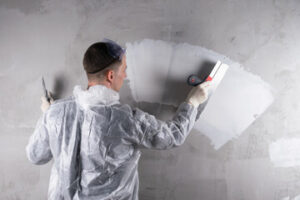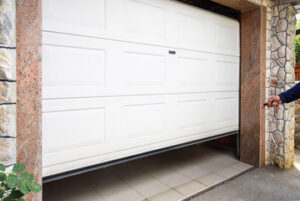Workplace Consulting is a strategic service that can help businesses reduce costs and boost productivity. It is often used during office relocations but can also be applied to existing premises.

A skilled consultant will be able to prioritise employee wellbeing and implement ergonomic principles in the workplace. They’ll also identify ways to improve communication and collaboration.
Employee Benefits Consultants play a critical role in helping businesses design and implement benefits packages that attract and retain top talent. They stay up-to-date on changing laws and regulations governing the employee perks industry, and use their expert knowledge to help companies create a competitive and cost-efficient benefits scheme.
Whether it’s group health insurance, retirement plans, student loan repayment, or paid leave options, an effective employee benefits package can go a long way in increasing morale and productivity at work. However, choosing the best plan for your company can be a challenge – especially when there are so many different options available. A benefits consultant can take the guesswork out of planning by assessing your business’s needs and budget, comparing quotes from different providers, and providing expert advice.
A qualified benefits consultant will also be able to advise you on tax considerations for each of your options, as well as any other regulatory obligations. They can also provide you with tips on how to keep costs down by streamlining your processes and using technology tools. They can even help you set up a digital platform that lets employees access their personal information and manage their benefits online.
When selecting an employee benefits consultant, look for one with a good track record of client service and expertise in the industry. Check that they’re licensed and insured, and can offer you a range of services that include planning, implementation, and ongoing support. They should also be familiar with a wide range of benefits, including life and disability insurance, health reimbursement arrangements, and employer-sponsored retirement plans.
An excellent employee benefits consultant will be an invaluable resource in keeping your staff informed and motivated. They’ll educate your employees on their options and explain the ins and outs of each plan, ensuring that they understand how to use their benefits effectively. They should also be able to provide you with references from other employers who have used their services.
Choosing the right benefits consultant for your company can make all the difference in the success of your organization. They’ll save you time by removing the burden of research and administrative tasks, and provide you with a better overall experience.
HR Consulting
HR consultants are contracted human resources experts that help companies with special projects. They can assist with anything from compiling an employee handbook to advising on a merger. Many HR software vendors also offer consulting services as part of their offerings to clients.
An HR consultant can help businesses save time by handling time-consuming administrative tasks like developing employee handbooks, more complex HR scenarios and managing employee relations. This allows in-house teams to focus their efforts on goal-oriented initiatives that help drive business success.
To be an effective HR consultant, a good knowledge of common HR concepts, best practices and compliance laws is a must. In addition, an in-depth understanding of HR software programs is also beneficial. Many HR consultants also obtain certifications to further develop their skills and knowledge.
Another critical trait of a good HR consultant is the ability to work with various types of people. For example, an HR consultant needs to be able to understand and accommodate the different perspectives of employees and their varying levels of comfort with new policies. This skill is especially important when working with a diverse workforce.
A successful HR consultant should also be able to communicate effectively with clients and other parties. This includes drafting proposals for projects and outlining fees, deadlines and the benefits of the services to be provided. The consultant should also be able to quickly adapt to changing situations. For example, if the consultant’s initial proposal is rejected by the client, the consultant should be able to rework it quickly and present it to the next potential prospect.
Other key factors to consider when choosing an HR consultancy include the type of insurance coverage, licensing requirements and any other legal considerations that may impact the project. For instance, the level of coverage required can be determined by a variety of factors, including the type of business and risk tolerance. A reputable firm should also have experience in the industry and a strong track record of client satisfaction.
Office Space Consultancy
Workspace consultants, also known as workplace strategists, have a deep understanding of how office design affects employee well-being and productivity. They can create a workspace that maximises efficiency and effectiveness, while incorporating the company’s branding into a functional space that’s aesthetically pleasing. Whether you’re looking to relocate your business or just want to change the layout of your current office, hiring a workplace consultant can be an excellent investment for your company.
Workplace consultancy can be useful in a number of ways, from determining your ideal office size to streamlining workflow processes. By conducting research into your employees’ preferences and needs, they can create an effective working environment that promotes collaboration and creativity. Workplace consultants can help you identify and address problems with the existing office design, including issues with lighting, furniture, and overall aesthetics. They can also provide you with a range of options for new office furniture and layouts that will improve worker productivity and comfort.
In addition, they can help you develop a strategic plan for the future of your business, outlining your current and potential growth requirements. This can save you a significant amount of money in the long run by eliminating any unnecessary costs. They can also advise you on the best location to meet your business’s goals, ensuring that the office is located in a convenient area with easy access to public transport and amenities.
Using data-driven insights, they can assist you with identifying your true office requirements and how they might be affected by future changes in workforce distribution and culture. They can then build this knowledge into a design that supports your unique business goals and will allow you to grow with confidence.
Additionally, they can help you find the most cost-effective and sustainable solutions for your office space by integrating green practices into the design process. This can include the use of energy-efficient equipment, implementing recycling stations and programmes, and promoting digital communication and file-sharing to reduce paper usage. Lastly, they can also prioritise employee health and safety by recommending ergonomic principles for healthy and safe work environments and promoting awareness of workplace risks such as stress and fatigue.
Organizational Design
Organizational design is the process by which a company establishes a structure that supports its strategy and goals. It involves analyzing the company’s current state to identify gaps, issues, and opportunities for improvement. Organizational design should also be flexible enough to adapt to changes in the business environment.
A key element of organizational design is clear and consistent job descriptions. This helps to prevent confusion over who does what and reduces the risk of conflict or mistrust between employees. Our team of experienced organizational designers can create a structure that makes it easy for employees to understand their role, who they report to, and how their work contributes to the success of the organization.
Another important aspect of organizational design is creating a culture that encourages desired behaviors. This includes providing a positive learning environment and rewarding career paths for top performers. Organizational design can also help to improve employee retention and make it easier for new employees to integrate into the company culture.
The final pillar of organizational design is the management of change. It is critical to ensure that the changes are implemented in a way that is both effective and sustainable. This is where good change management practices come into play, including communication, training, and incentives. It is also important to monitor results in order to ensure that the organizational design is delivering the expected benefits.
Organizational design is a powerful tool that can be used to improve the quality of goods and services produced by a company, increase profits, and strengthen relationships with customers. It can also streamline systems, make organizational structures less political, and knit together disparate departments under a single, unified culture. However, it is important to remember that organizational design is a process, not an event. A successful implementation requires the support of leaders at every level and requires patience and collaboration with all stakeholders. If done correctly, organizational design can transform your company into a high performing, competitive, and innovative business. The key is to start with a bold vision, marshal your resources toward that goal, and be ready to adapt to the changing business environment.








